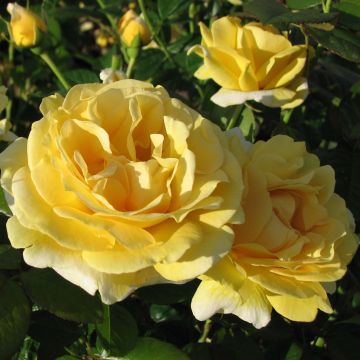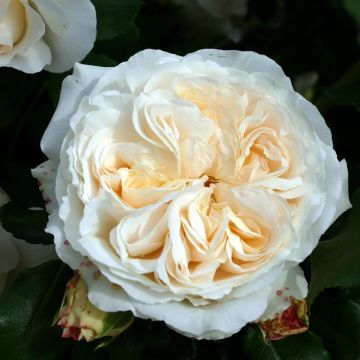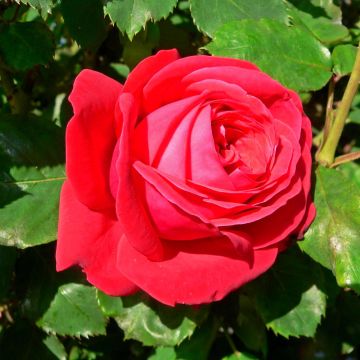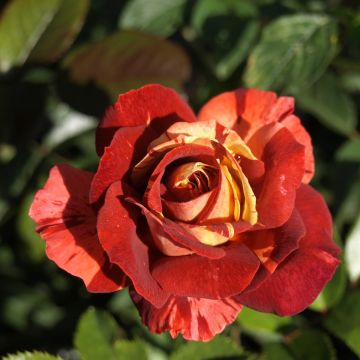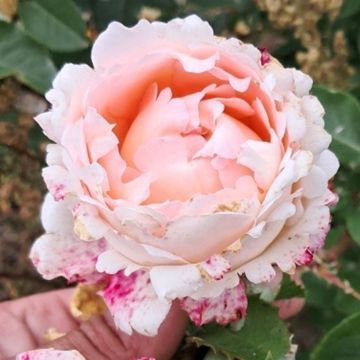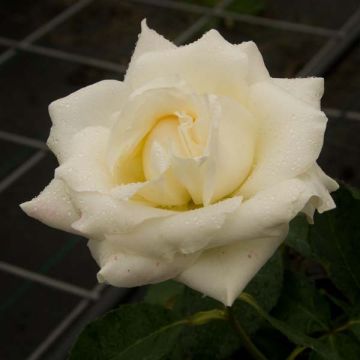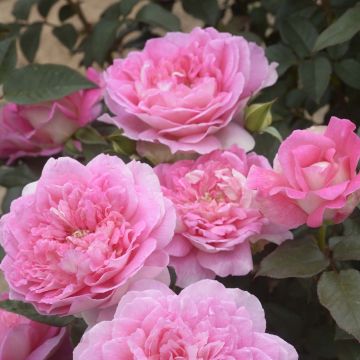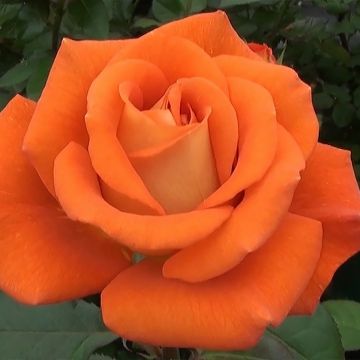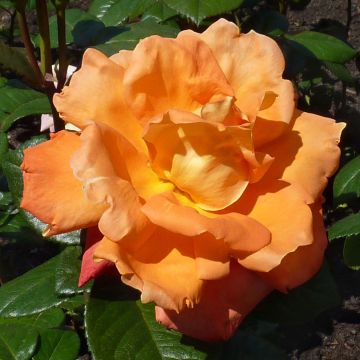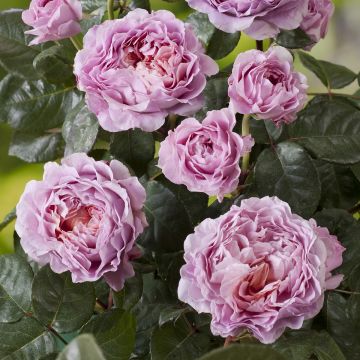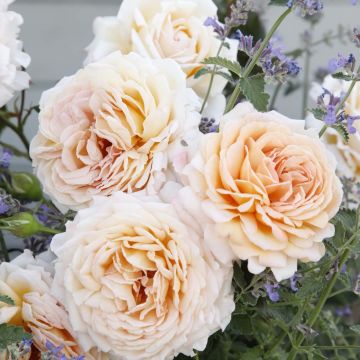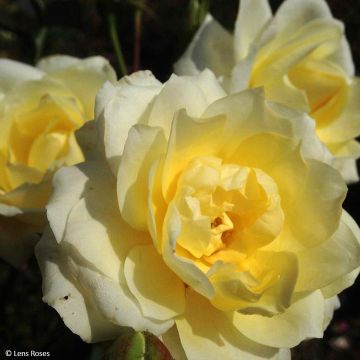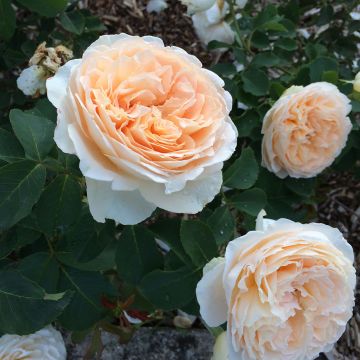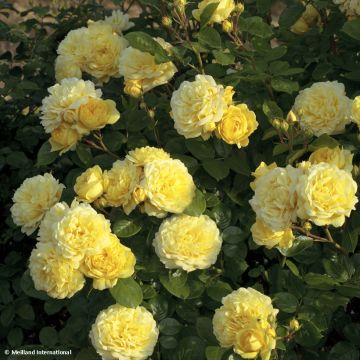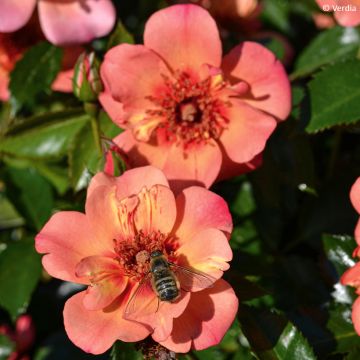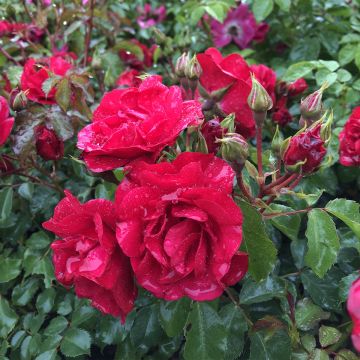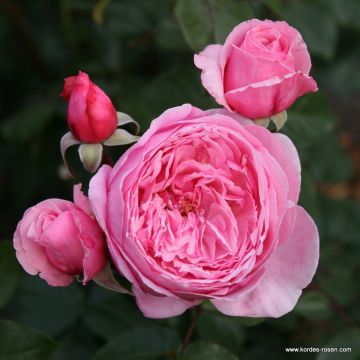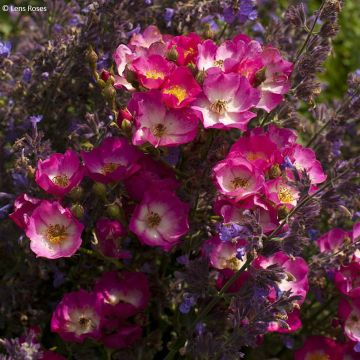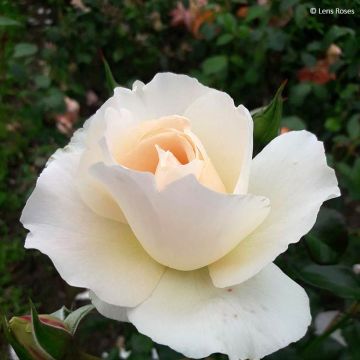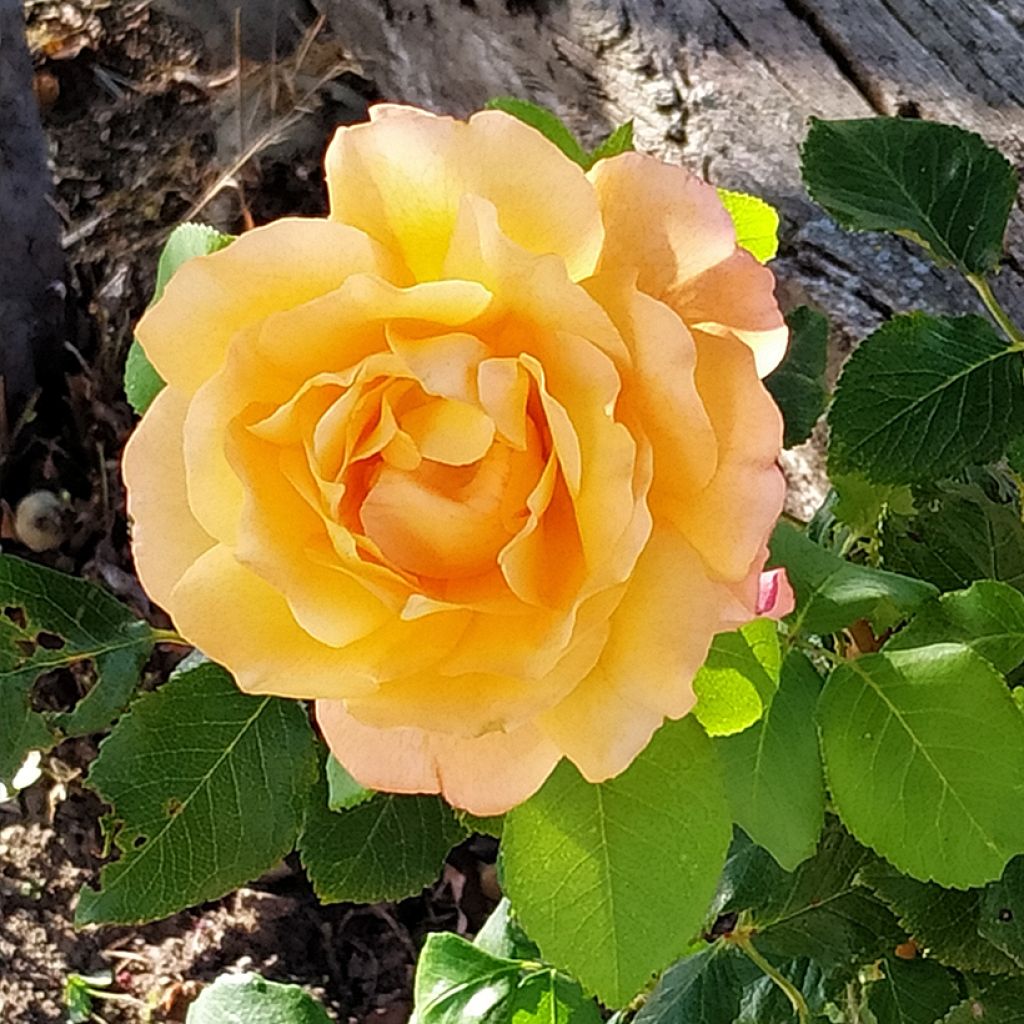

Rosa Yellowstone
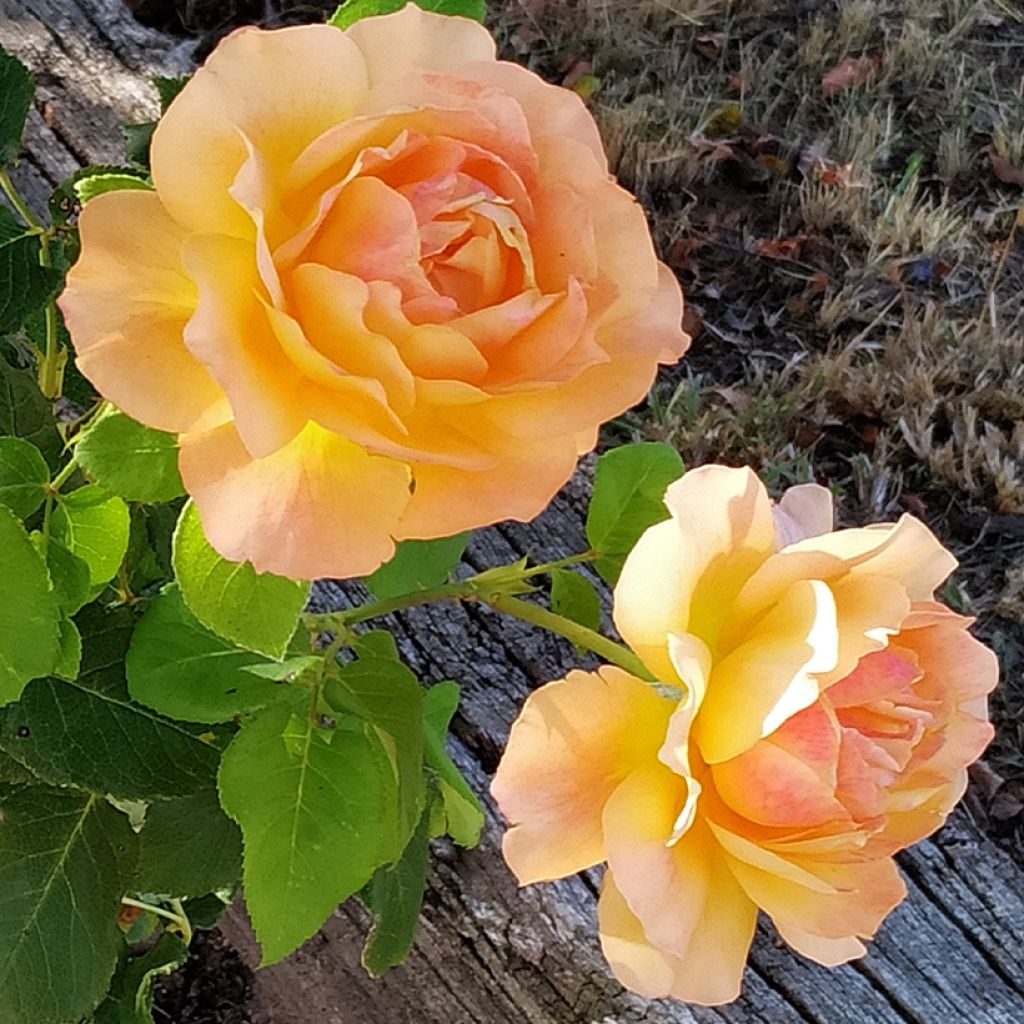

Rosa Yellowstone
Rosa Yellowstone
Rosa Yellowstone® 'Oraleymy'
Thanks to the individuals (for order preparation and shipment), the bare-root rose received appears healthy to me. Planted close to the varieties "The Lark Ascending", "Vanessa Bell" & "Roald Dahl", I am now patiently waiting for it to take root... (or not?).
Thierry, 24/11/2023
This item cannot be shipped to the selected country
Delivery charge from €5.90
Delivery charge from €5.90
More information
Schedule delivery date,
and select date in basket
This plant carries a 24 months recovery warranty
More information
We guarantee the quality of our plants for a full growing cycle, and will replace at our expense any plant that fails to recover under normal climatic and planting conditions.
From €5.90 for pickup delivery and €6.90 for home delivery
Express home delivery from €8.90.
From €5.90 for pickup delivery and €6.90 for home delivery
Express home delivery from €8.90.
Does this plant fit my garden?
Set up your Plantfit profile →
Description
Rosa Yellowstone is a modern hybrid tea rose with elegant flowers. They are amber-yellow with hints of orange at the centre. Of medium size, it produces an abundance of flowers in clusters of 5 to 8 semi-double blooms. The repeat-flowering roses are slightly fragrant. Highly resistant to diseases, this rose won the 1st prize "Rosa Ciudadana" in Barcelona in 2022. It blooms from June to September or October on a vigorous bush with shiny light green foliage.
Rosa Yellowstone is a recently obtained bush rose with large flowers. It was created by Orard. It is a spreading and erect bushy shrub that reaches 80cm (32in) in height and 50 to 60cm (20 to 24in) in width at maturity. It has a fast growth rate. It develops strong, slightly rigid, thorny branches that bear elegant, sturdy foliage of a glossy light green colour. The foliage is disease-resistant. It will bloom throughout summer if faded flowers are removed. It produces large, semi-double flowers measuring 5cm (2in) in diameter, composed of 40 petals. They are grouped in small clusters and are carried at the ends of long shoots from the current year or by those that emerge from 2-year-old stems. The deciduous foliage falls in autumn and reappears in spring.
Rosa Yellowstone is ideal for borders and flower beds, and performs especially well in pots. It can be paired with other roses in a range of colours, by choosing varieties with yellow, cream, or orange flowers. It can also be planted in groups of several identical plants to enjoy the purity of its flower. Perennials and companion bushes can accompany it in flower beds. Daisies, blue spike flowers like sage or catmints, delphiniums, or the dark foliage of certain physocarpus or feathery bronze fennel are ideal companions. Its cut flowers are perfect for bouquets.
Report an error about the product description
Plant habit
Flowering
Foliage
Botanical data
Rosa
Yellowstone® 'Oraleymy'
Rosaceae
Cultivar or hybrid
Other Large-flower tea Roses
Planting and care
Plant in a sunny location. Modern roses are tolerant, but do not like excessive limestone. They will adapt to any garden as long as the soil is well worked, not too heavy, and sufficiently rich. To plant your rose, work the soil by crumbling it and add fertiliser to the bottom of the planting hole (dried blood or dehydrated horn, for example). Water generously after planting to remove any air pockets. Water regularly for a few weeks to facilitate root growth. Provide your rose with special rose fertiliser that stimulates flowering.
Planting period
Intended location
Care
-
, onOrder confirmed
Reply from on Promesse de fleurs
Roses by producer
Haven't found what you were looking for?
Hardiness is the lowest winter temperature a plant can endure without suffering serious damage or even dying. However, hardiness is affected by location (a sheltered area, such as a patio), protection (winter cover) and soil type (hardiness is improved by well-drained soil).

Photo Sharing Terms & Conditions
In order to encourage gardeners to interact and share their experiences, Promesse de fleurs offers various media enabling content to be uploaded onto its Site - in particular via the ‘Photo sharing’ module.
The User agrees to refrain from:
- Posting any content that is illegal, prejudicial, insulting, racist, inciteful to hatred, revisionist, contrary to public decency, that infringes on privacy or on the privacy rights of third parties, in particular the publicity rights of persons and goods, intellectual property rights, or the right to privacy.
- Submitting content on behalf of a third party;
- Impersonate the identity of a third party and/or publish any personal information about a third party;
In general, the User undertakes to refrain from any unethical behaviour.
All Content (in particular text, comments, files, images, photos, videos, creative works, etc.), which may be subject to property or intellectual property rights, image or other private rights, shall remain the property of the User, subject to the limited rights granted by the terms of the licence granted by Promesse de fleurs as stated below. Users are at liberty to publish or not to publish such Content on the Site, notably via the ‘Photo Sharing’ facility, and accept that this Content shall be made public and freely accessible, notably on the Internet.
Users further acknowledge, undertake to have ,and guarantee that they hold all necessary rights and permissions to publish such material on the Site, in particular with regard to the legislation in force pertaining to any privacy, property, intellectual property, image, or contractual rights, or rights of any other nature. By publishing such Content on the Site, Users acknowledge accepting full liability as publishers of the Content within the meaning of the law, and grant Promesse de fleurs, free of charge, an inclusive, worldwide licence for the said Content for the entire duration of its publication, including all reproduction, representation, up/downloading, displaying, performing, transmission, and storage rights.
Users also grant permission for their name to be linked to the Content and accept that this link may not always be made available.
By engaging in posting material, Users consent to their Content becoming automatically accessible on the Internet, in particular on other sites and/or blogs and/or web pages of the Promesse de fleurs site, including in particular social pages and the Promesse de fleurs catalogue.
Users may secure the removal of entrusted content free of charge by issuing a simple request via our contact form.
The flowering period indicated on our website applies to countries and regions located in USDA zone 8 (France, the United Kingdom, Ireland, the Netherlands, etc.)
It will vary according to where you live:
- In zones 9 to 10 (Italy, Spain, Greece, etc.), flowering will occur about 2 to 4 weeks earlier.
- In zones 6 to 7 (Germany, Poland, Slovenia, and lower mountainous regions), flowering will be delayed by 2 to 3 weeks.
- In zone 5 (Central Europe, Scandinavia), blooming will be delayed by 3 to 5 weeks.
In temperate climates, pruning of spring-flowering shrubs (forsythia, spireas, etc.) should be done just after flowering.
Pruning of summer-flowering shrubs (Indian Lilac, Perovskia, etc.) can be done in winter or spring.
In cold regions as well as with frost-sensitive plants, avoid pruning too early when severe frosts may still occur.
The planting period indicated on our website applies to countries and regions located in USDA zone 8 (France, United Kingdom, Ireland, Netherlands).
It will vary according to where you live:
- In Mediterranean zones (Marseille, Madrid, Milan, etc.), autumn and winter are the best planting periods.
- In continental zones (Strasbourg, Munich, Vienna, etc.), delay planting by 2 to 3 weeks in spring and bring it forward by 2 to 4 weeks in autumn.
- In mountainous regions (the Alps, Pyrenees, Carpathians, etc.), it is best to plant in late spring (May-June) or late summer (August-September).
The harvesting period indicated on our website applies to countries and regions in USDA zone 8 (France, England, Ireland, the Netherlands).
In colder areas (Scandinavia, Poland, Austria...) fruit and vegetable harvests are likely to be delayed by 3-4 weeks.
In warmer areas (Italy, Spain, Greece, etc.), harvesting will probably take place earlier, depending on weather conditions.
The sowing periods indicated on our website apply to countries and regions within USDA Zone 8 (France, UK, Ireland, Netherlands).
In colder areas (Scandinavia, Poland, Austria...), delay any outdoor sowing by 3-4 weeks, or sow under glass.
In warmer climes (Italy, Spain, Greece, etc.), bring outdoor sowing forward by a few weeks.

































